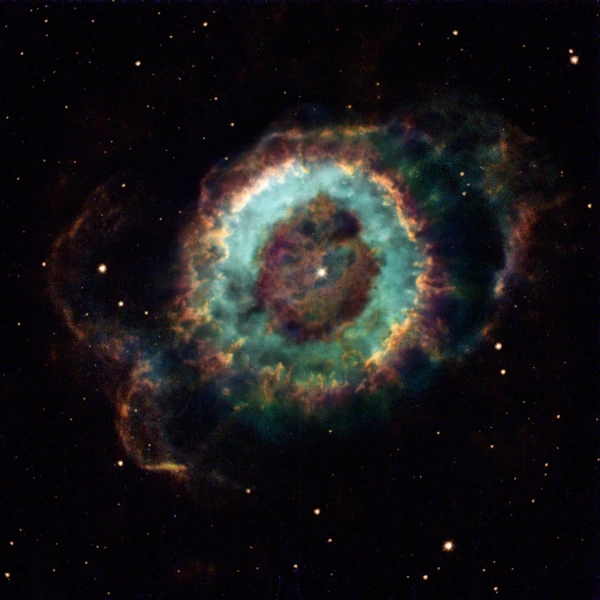
The ultimate fate of a star is intimately linked to its initial mass. Small stars like the Sun exhaust their hydrogen and then helium, ending their lives as white dwarfs. More massive stars (\(> 8 M_{\odot}\)) undergo gravitational collapse, triggering a supernova that can give birth to a neutron star or a black hole if the residual mass exceeds the critical limit.
The initial mass of a star acts as a cosmic law determining every stage of its existence. A low mass implies slow hydrogen consumption, ensuring a lifespan of tens of billions of years. In contrast, a massive star burns its fuel in just a few million years, in an unstable balance where thermal fusion pressure constantly battles gravity.
The death of the star occurs when nuclear reactions no longer provide enough pressure to counteract gravity. The Chandrasekhar limit sets the boundary for white dwarfs, while the Tolman–Oppenheimer–Volkoff limit marks the line between neutron stars and black holes. Thus, mass conditions the type of compact remnant left behind, while regulating the intensity of associated cataclysmic phenomena such as supernovae, gamma-ray bursts, and gravitational waves.
In summary, a star's mass is not just a physical parameter; it is a true cosmic destiny that determines whether it will shine quietly for billions of years or extinguish violently in a titanic stellar explosion.
When fusion ceases, gravity dominates. Electron degeneracy pressure limits the mass of a white dwarf to \(\approx 1.44 M_{\odot}\) (Chandrasekhar limit). Beyond this, collapse cannot be stopped, and matter is compressed until neutrons form. If the core mass exceeds about 3 M☉ (Tolman–Oppenheimer–Volkoff limit), no known mechanism can prevent the formation of a black hole.
| Star Mass (M☉) | Type / Stellar Phase | Final Evolution | Physical Mechanism | Comment |
|---|---|---|---|---|
| < 0.08 | Brown dwarf | No nuclear ignition | Gravity balanced by degeneracy pressure | Substellar object, weak infrared radiation |
| 0.08 – 0.5 | Red dwarf (type M) | White dwarf (in billions of years) | Slow hydrogen fusion → not yet completed in the current Universe | Lifespan > 1000 billion years |
| 0.5 – 2 | Sun-like star | White dwarf | Red giant phase → planetary nebula | Lifespan of tens of billions of years |
| 2 – 8 | Intermediate stars (AGB) | Massive white dwarf | Mass loss via stellar winds → envelope ejection | Formation of bright planetary nebula |
| 8 – 25 | Red or blue supergiant | Neutron star | Core collapse + Type II supernova | Pulsars detectable by radio radiation |
| 25 – 100 | Very massive supergiant | Stellar black hole | Irreversible gravitational collapse | Indirect detection via X-rays and gravitational waves |
| > 100 | Extremely massive star | Black hole via pair instability | Direct collapse, sometimes without visible supernova | Hypothesis applied to the primordial Universe |
| Hypothetical cases | Quark star / primordial black hole | Exotic compact object | Theories beyond standard nuclear physics | No confirmed observations to date |
Sources: NASA ADS – Astrophysics Data System, arXiv.org – Astrophysics, ESA – Stellar Evolution.